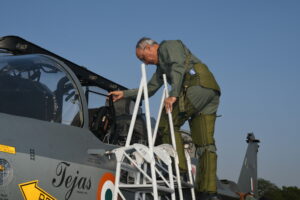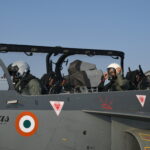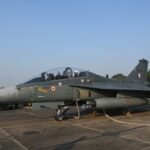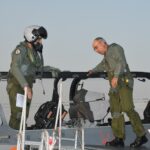“Air control can be established by superiority in numbers, by better employment, by better equipment, or by a combination of these factors.”
– Carl Andrew Spaatz
Air control is essential and a fundamental principle for the effective employment of air power.
Air dominance is a generic term meaning dominating the domain of the air. It is like saying that Nadal or Djokovic are dominating the tennis circuit or Tiger Woods is dominating the golf world. In the context of air warfare, the genesis of this term started with the United States when they started their F22 program and the fifth generation F-35 aircraft, calling it air domination fighter, claiming that the aircraft has technology so superior that it’ll dominate the skies. USA has named its next sixth generation program as the New Generation Air Dominance (NGAD) program. USA has been dominating the skies for years with superior technology, which is now being challenged by China with its fifth and sixth-generation aircraft and systems.
“To have command of the air means to cut an enemy’s army and navy from their bases of operation and nullify their chances of winning the war.”
– Giulio Douhet
Command of the air and Control of the air, are terms indicating the prevailing state in the air war i.e. which side is getting the better off the other one. Both terms are loosely used interchangeably, but there is a subtle difference regarding the level. It is not the fighter aircraft alone, that contributes toward commanding or controlling the skies, it is the entire gambit of air power. These terms indicate the freedom to use the medium of air to own advantage and denial of the same to the enemy.
Air Supremacy, Air Superiority, and Favourable air situation are three terms that indicate the degree of command and control. They are indicative of three factors i.e. volume of airspace, duration, and extent of possible enemy interference.
Air Supremacy is when the entire airspace (own and enemy) is under its control for the entire duration of hostilities and the enemy is not able to interfere in any way with operations. Most of the US air wars have been against enemies that are weak in air war capability and the US forces have been able to achieve and maintain air superiority.
Air Supremacy is achieved when the entire enemy air power is neutralised, and the entire enemy air power is not able to use the medium of the air. Achieving air supremacy is a sort of strategic objective that needs a dedicated counter-air campaign.
Air superiority exists when the area is somewhat limited geographically and does not cover the entire air space, time-wise it may be restricted to a few hours or days and the enemy may be able to interfere to some extent (not to a prohibitively high extent).
Favourable Air Situation is the lowest level of control, influencing much smaller areas, for a limited duration and with a higher (not high enough to jeopardise the success of own missions) degree of enemy interference. It is like a tactical umbrella.
The degree to which the control of air can be achieved largely depends upon the differential in air power of the two opposing sides.
It needs to be decided and specified clearly in the objectives.
Suggestions and value additions are most welcome
For regular updates, please register here:-
Subscribe
References and credits
To all the online sites and channels.
Disclaimer:
Information and data included in the blog are for educational & non-commercial purposes only and have been carefully adapted, excerpted, or edited from sources deemed reliable and accurate. All copyrighted material belongs to respective owners and is provided only for purposes of wider dissemination.






